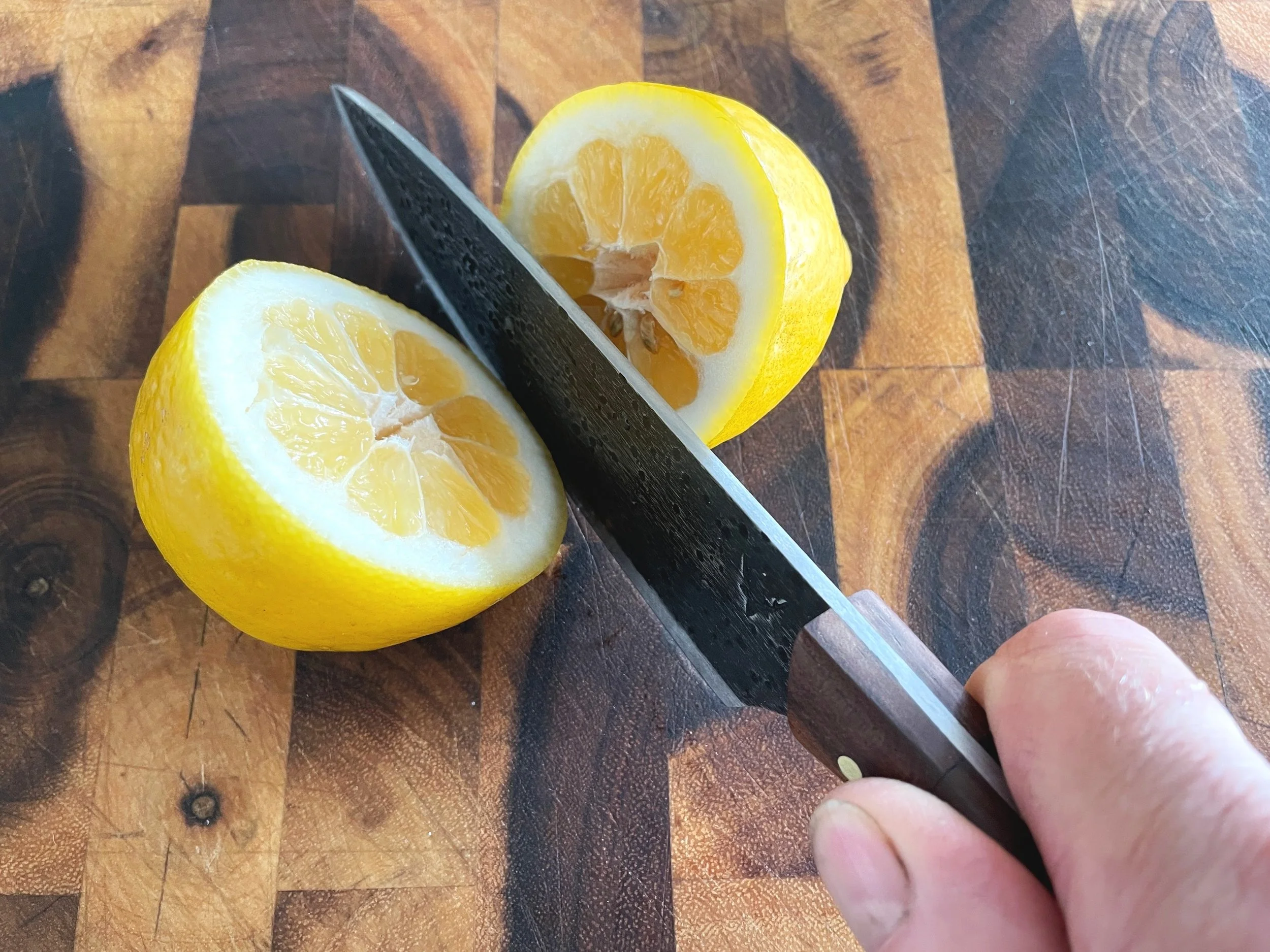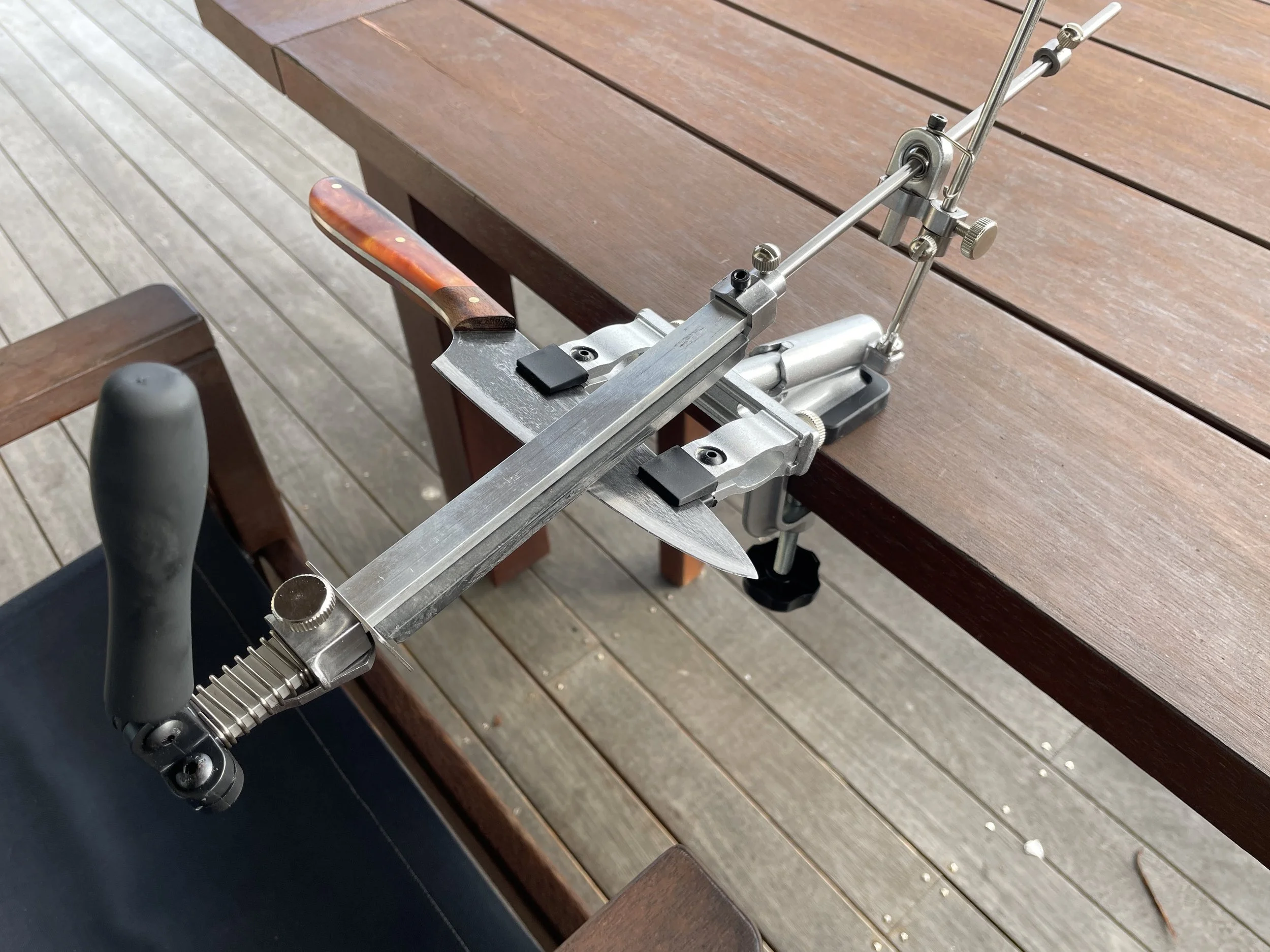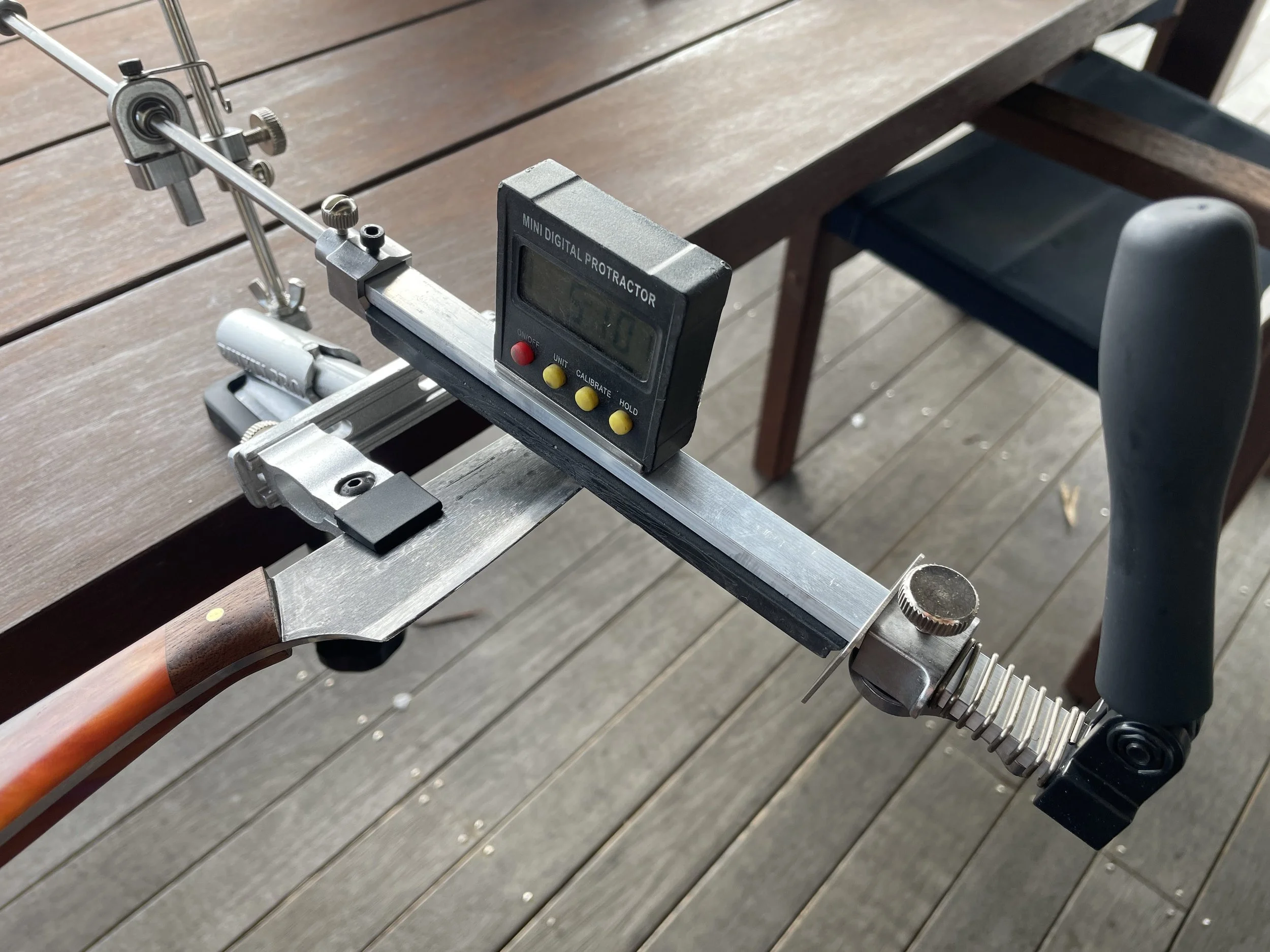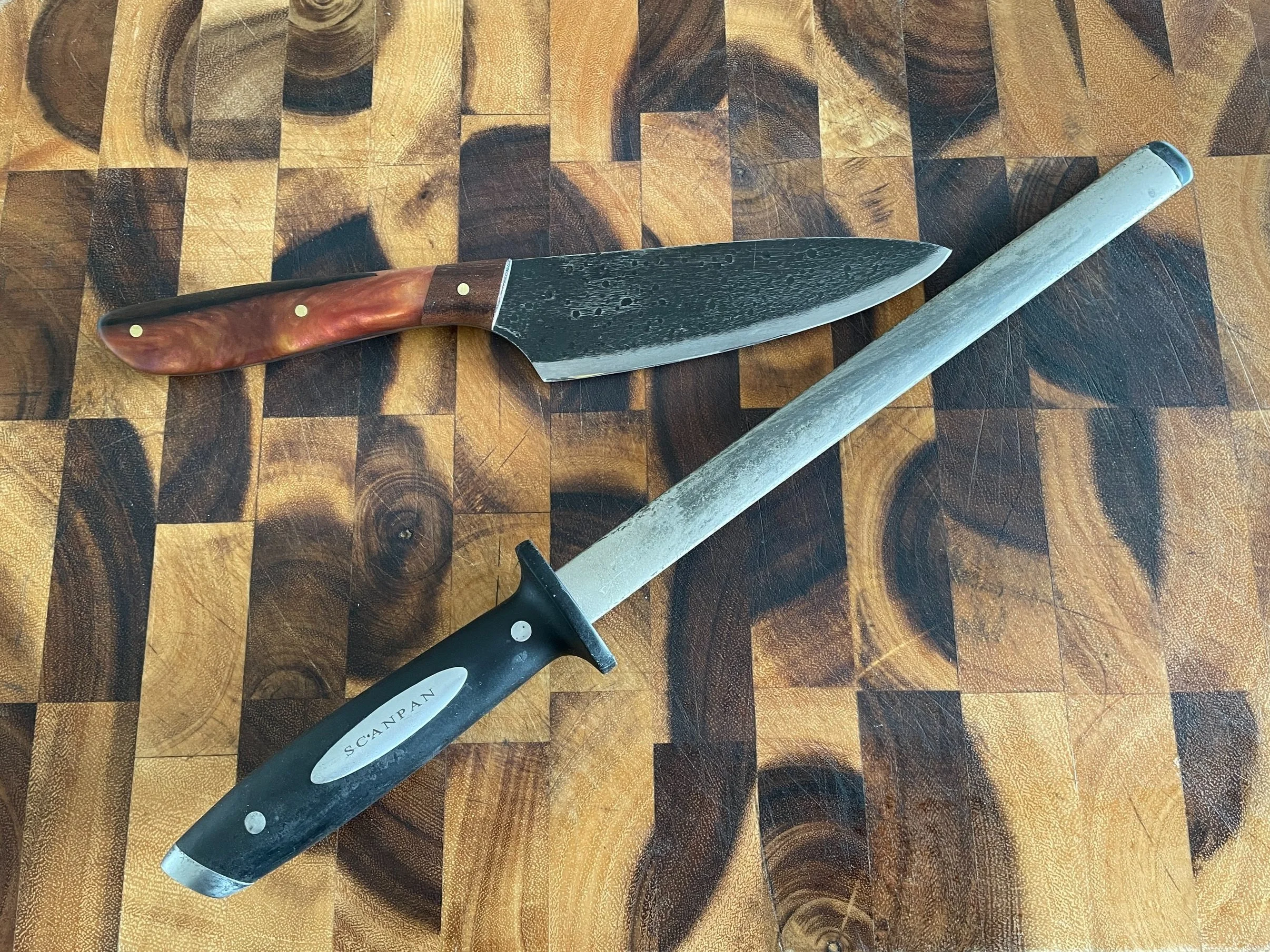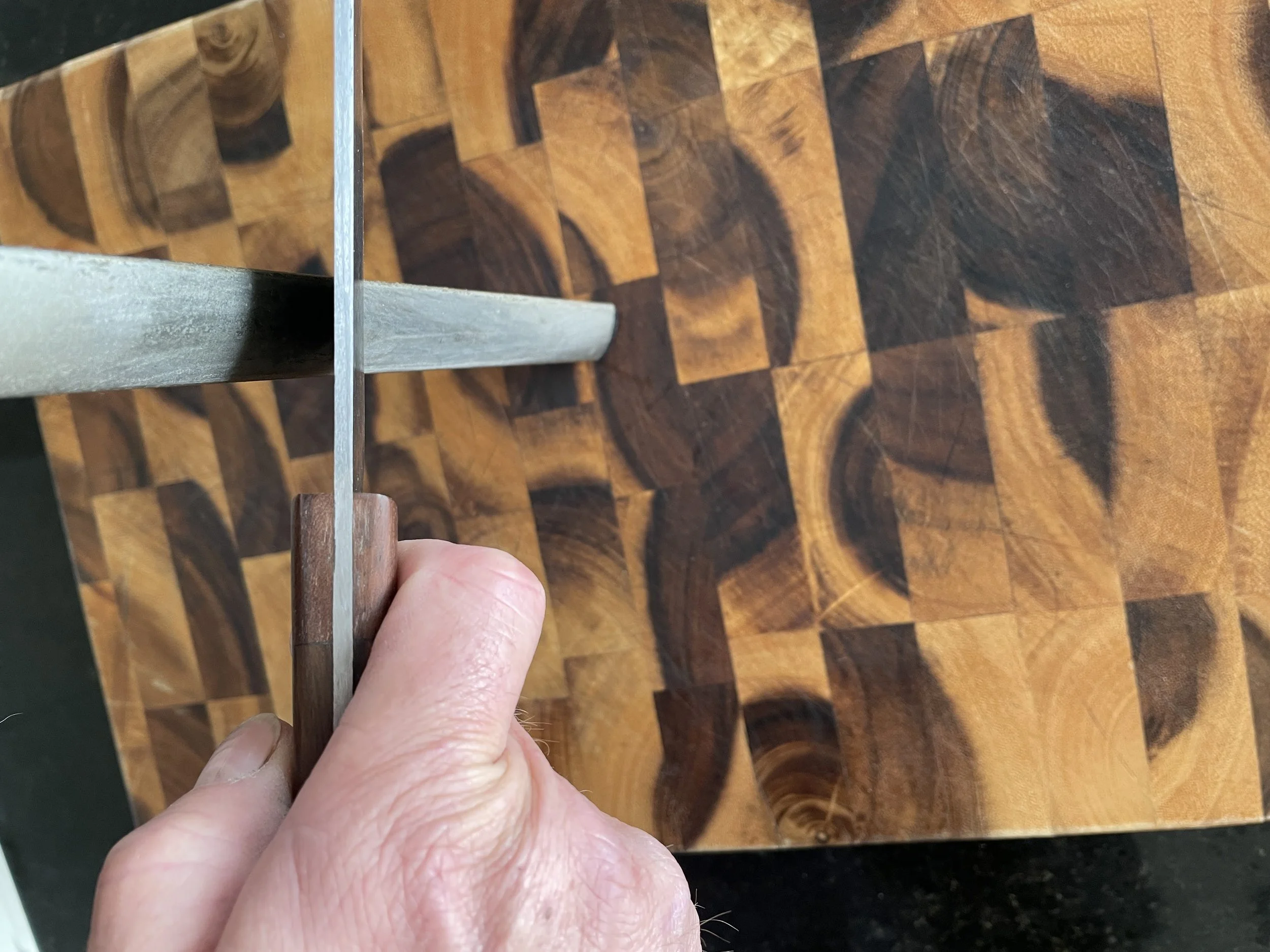How to Keep Your Knives Razor Sharp
When I’m selling my knives at the Nelson Market on a Saturday morning, one of the most common questions I get is, “What’s the best way to sharpen a knife?”
My answer is simple: I point to the fixed sharpening jig on the table in front of me, explain how effective it is, and give a quick demo. I use a jig to sharpen all of my knives, and it gets them razor sharp. Most knives only need a proper sharpening with the jig once every 3 to 6 months, depending on how often they're used.
Between those sharpening sessions, a honing steel is all you need to maintain the edge.
In this article, I’ll explain how to use both a fixed jig and a honing steel. Once you’ve got the tools and the know-how, you’ll never have to put up with blunt knives again.
Exhibiting and sharpening at the Nelson Market
Why Sharp Knives Matter
A sharp knife isn’t just more pleasant to use — it’s also safer. A dull blade is more likely to slip and cause injury. Sharp knives glide through food with control and precision, saving you effort and improving your results in the kitchen. Whether you're slicing tomatoes or dicing onions, a razor-sharp edge makes all the difference.
Effortless cutting
What is a Fixed Sharpening Jig?
A fixed sharpening jig is a simple but highly effective tool that holds your knife at a consistent angle while you sharpen it with a stone. I recommend diamond stones because they are durable and don’t need lubrication. The jig removes all the guesswork from sharpening — you get the same angle, every time, on both sides of the blade. This consistency is what gives you a truly sharp edge.
Unlike freehand sharpening, where the angle can waver slightly with each stroke, a jig ensures precision. It’s ideal for beginners and experienced cooks alike. When purchasing a jig, look for one that has a metal pivot/swivel and rubber pads where the jig fixture holds the knife blade. Some jigs have cheap plastic pivots/swivels and some don’t have rubber pads and they can scratch the blades.
Fixed sharpening jig
How to Use a Fixed Jig (Step-by-Step)
What you’ll need:
A fixed sharpening jig
Sharpening stones (coarse to fine grit)
A protractor
A clean towel
Steps:
Note: Most jigs come with detailed instructions.
Clamp the Knife: Secure the blade into the jig, making sure it’s centered
Set up the Angle. I recommend 20° for kitchen and outdoor knives and 17° for filleting knives. You can use a digital protractor or a cell phone with a protractor app – to set up the angle. Most jigs arms are at 15° already so you only need to set the stone angle to 5° or 2°.
Sharpen One Side: Push forward and run the stone evenly along the length of the blade, using light pressure and smooth strokes. Start from the handle end and work towards the tip. Most of the sharpening should be done on the forward stroke. Let the jig maintain the angle for you.
Check for a Burr: After a few passes, look and feel for a burr (a slight lip of metal) on the opposite edge — that’s a sign you’ve sharpened enough on that side.
Flip and Repeat: Adjust the jig to sharpen the other side until you see or feel a burr again.
Polish the Edge: Use the finer stones to finish and polish the edge.
Clean the Knife: Wipe the blade clean and dry thoroughly.
Your knife should now be able to slice effortlessly through paper or tomato skin with no pressure at all.
There are many jigs available on the market and not all of them are good quality. We can sell you a quality jig (the one I use). Please email us on info@gamevalleyknives.com.
Getting the angle right
Maintaining the Edge with a Honing Steel
Honing doesn’t sharpen the blade — it realigns the edge. Over time, even a sharp edge can fold over slightly with use. A honing steel straightens it back out.
Honing steel
How to use a honing steel:
Hold the Steel Vertically: Tip down, with the handle up and the end resting on a cutting board.
Angle the Knife: Set your blade at approx 20° to the steel. The angle is not critical.
Swipe Evenly: Starting at the base of the blade, swipe down and across the steel in a smooth arc, from heel to tip. Repeat on the other side.
Repeat: Do 2–3 strokes per side.
Using the honing steel
Sharpening vs. Honing: How Often?
Honing: As often as you like — daily is ideal.
Sharpening with the jig: Every 3 to 6 months, depending on how heavily you use the knife. If it’s not slicing cleanly anymore even after honing, it’s time to sharpen.
Signs Your Knife Needs Sharpening
It struggles to cut tomatoes or onions cleanly
You are struggling to skin a deer or fillet a fish
It slips off meat or food instead of biting in
You’re having to press harder than usual
Final Tips
Store knives properly: Use a knife block, magnetic strip, or blade guards. Don’t toss them in a drawer.
Avoid hard surfaces: Don’t cut on glass, granite, or metal. Use wood or plastic cutting boards.
Dry immediately after washing: This prevents rust.
Once you start using a jig and honing steel, you’ll wonder how you ever managed without them. The tools do most of the work. All you need is a little time and the willingness to care for your knives. Sharp knives make cooking, hunting, and fishing easier, safer, and way more enjoyable.



